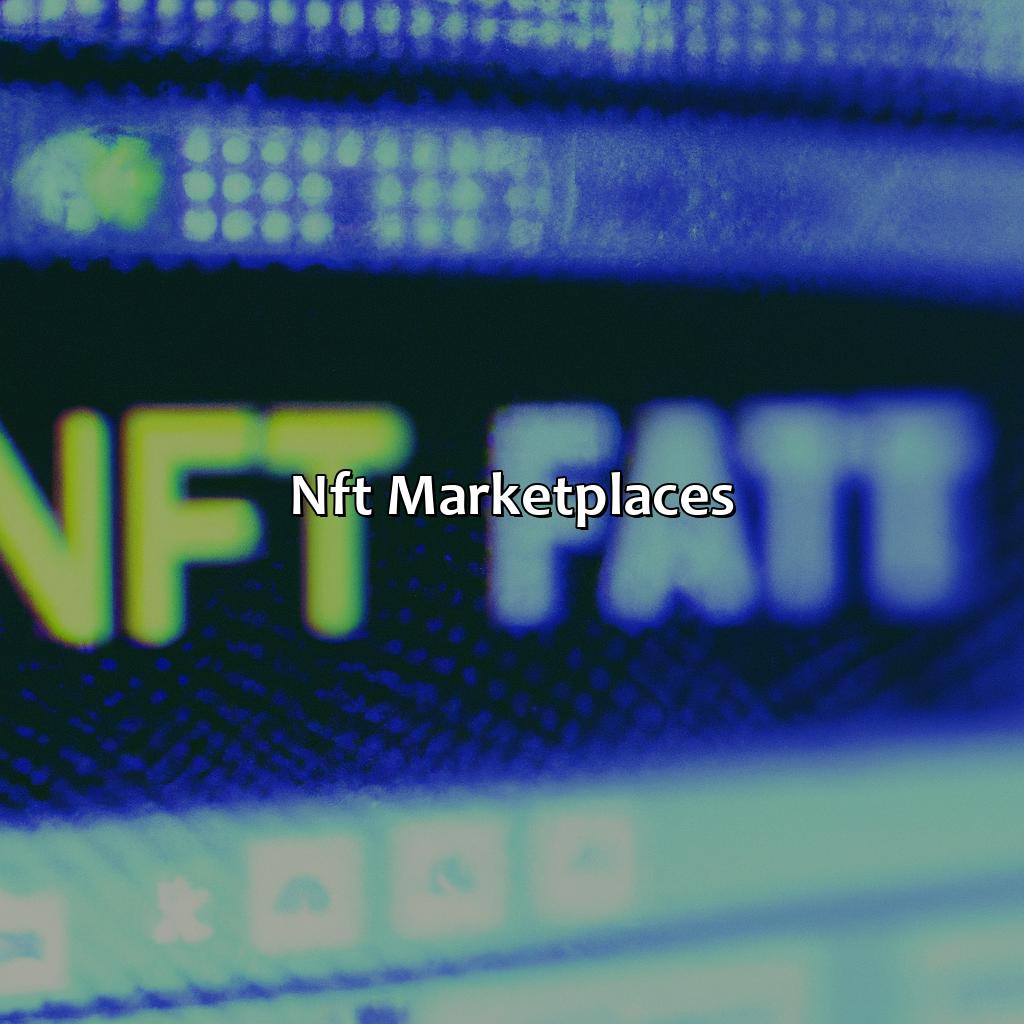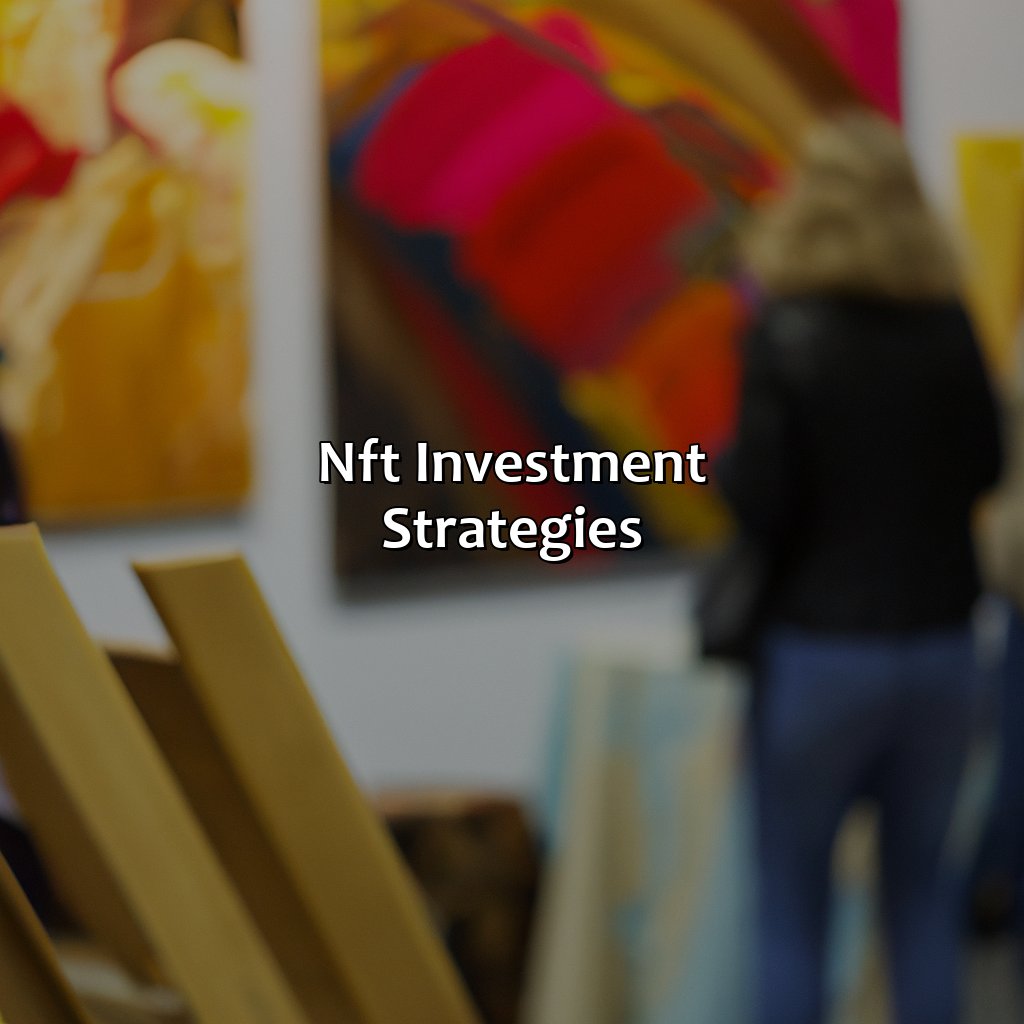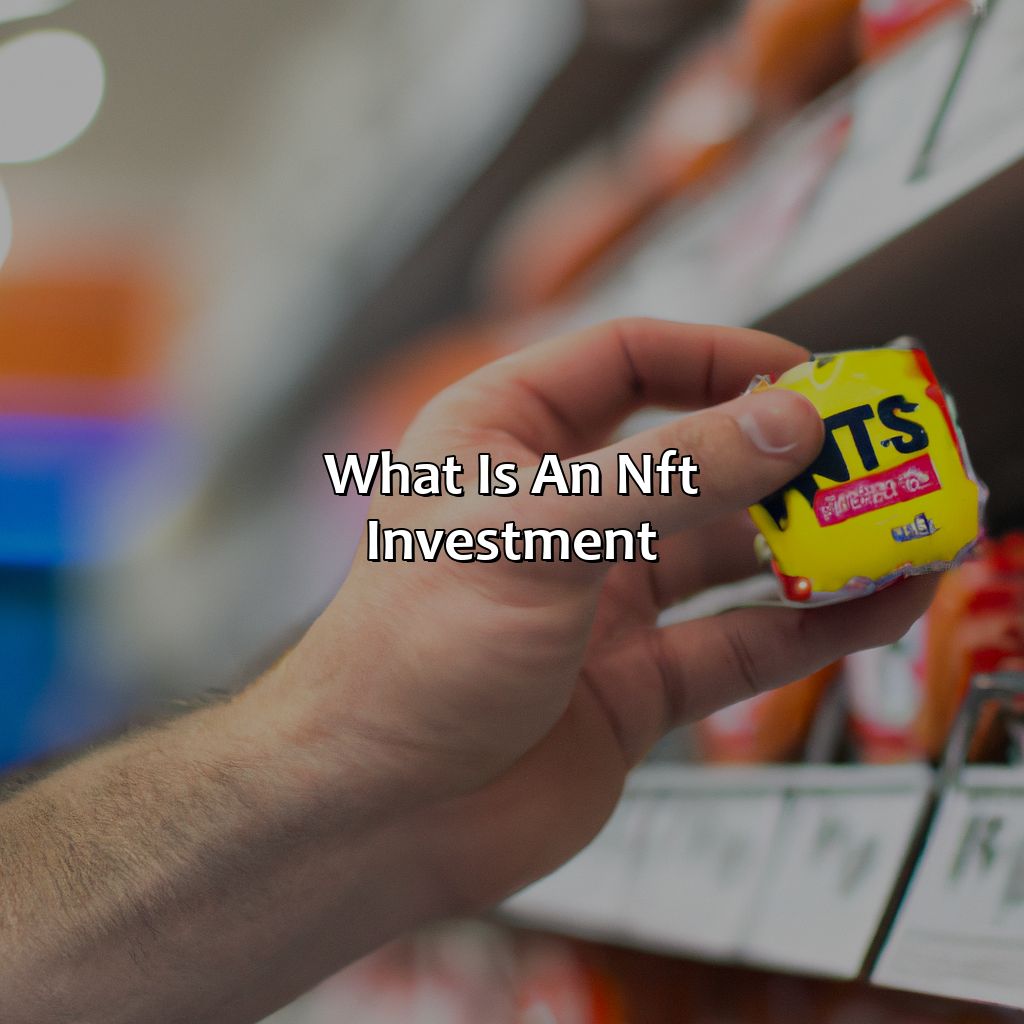What Is An Nft Investment?
Key Takeaway:
- NFTs are digital assets that use blockchain technology to authenticate their uniqueness, making them valuable and collectible. Investing in NFTs allows individuals to own and trade unique digital assets with potential for appreciation in value.
- Advantages of investing in NFTs include potential for high returns on investment, diversification of portfolio, and no physical storage requirements. However, investors should be aware of the risks involved, such as market volatility and lack of regulation.
- Popular NFT marketplaces include OpenSea, Nifty Gateway, and SuperRare. To buy and sell NFTs, investors need to create an account with the marketplace and connect their digital wallet. It is important to research the marketplace and the NFT before making a purchase or sale.
- NFT investment strategies include short-term trading, long-term holding, and investing in specific artists or collections. Investors should consider their risk tolerance, investment goals, and market trends when choosing a strategy.
Are you curious about NFT investments and wondering how you can get started? You’ll learn the basics of NFTs and how investing in them can be lucrative and exciting. Discover how to invest in NFTs and potentially benefit from the growing NFT industry.
What are NFTs?
To get to grips with NFTs, submerge yourself in the digital ownership universe. Learn the definition of NFTs and explore the blockchain tech behind them. Trace the backstory of this crypto art revolution.

Image credits: retiregenz.com by Adam Washington
Definition of NFTs
Non-Fungible Tokens (NFTs) are unique digital assets stored on Blockchain. They enable ownership of digital content, such as artwork, music, videos, and sports highlights, verified by a unique code. These tokens are non-interchangeable and non-divisible. NFT ownership can be transferred or sold, thereby creating value for these digital assets.
Investing in NFTs has become increasingly popular due to unique asset ownership and value appreciation potential. NFT collectors earn through the sale or trade of these assets on online marketplaces. It’s best to research the NFT market before investing heavily.
NFTs create an opportunity for creators to monetize their digital work that previously did not exist, changing the way we value and buy digital art.
Pro Tip: The rapid rise of the NFT market comes amid increased scrutiny towards its environmental impact. Ensure you have a clear understanding of the energy consumption needed to verify transactions on the Blockchain network before investing in an NFT asset.
You can now own a piece of history, or at least a piece of digital art history, with the rise of NFTs.
History of NFTs
NFTs have an intriguing origins story that begins in 2014 with the conception of the ERC-721 standard. This standard allowed developers to create token-based certificates of digital ownership – ultimately birthing the NFT we know and invest in today. As the years went on, more and more industries began adopting NFTs as a means of proving authenticity for unique digital assets such as art, music, videos and gifs.
A pivotal moment for NFTs occurred when a piece of digital art titled “Everydays: The First 5000 Days” created by Beeple was sold at Christie’s Auction House for $69 million in March 2021. Since then, NFT investments have taken off and surpassed many people’s wildest expectations.
One notable attribute of NFT investments is their exclusivity. Due to their uniqueness, consumers have an affinity towards owning one-of-a-kind pieces they can call their own. After all, anyone can pull up a picture on Google image search – but only one person can claim sole ownership over an NFT. As social media loses its allure due to oversaturation and lack of uniqueness, NFTs’ popularity persists.
According to NonFungible.com data, from January to April 2021 alone, the total volume of sales related to non-fungible tokens (NFTs) was $2 billion USD – considerably larger than previous years.
Get ready to gamble your money on digital assets that may or may not have any actual value- NFT investing is the new cryptocurrency craze.
Investing in NFTs
Investing in NFTs is an exciting prospect! It can provide tremendous rewards. To help you make the most informed decisions, let’s look at the advantages and risks of investing in NFTs. Knowing the advantages can help you gain more rewards, while understanding the risks can help prevent losses.

Image credits: retiregenz.com by David Duncun
Advantages of investing in NFTs
Investing in NFTs – Benefit from buying Non-Fungible Tokens
NFTs are a unique blockchain-based asset that offers profitable investment opportunities.
- High potential for appreciation – The NFT market has seen remarkable growth lately and is projected to keep up its pace. Investing in specific NFTs with dynamic artists or highly anticipated collections can yield enormous returns.
- Diversification – Compared to the traditional investment avenues, like stocks and bonds, NFTs offer portfolio diversification. It lets you add a new type of asset class, effectively lowering the overall portfolio risk while increasing returns.
- Exclusivity – You can own a piece of digital art created by famous artists or purchase memorable moments captured in rare collectibles. The exclusivity of owning something rare gives investors an opportunity to stand out.
Moreover, unlike traditional investments like stocks or bonds, where you rely on the performance of companies or the broader economy, NFT investments could be based on more intricate factors like brand image, social appeal rather than stability.
Be warned, investing in NFTs is like playing a game of Jenga with your bank account. One wrong move and everything comes crashing down.
Risks of investing in NFTs
Investing in NFTs may lead to several potential hazards that investors should consider:
- The first risk factor is the high volatility of the NFT market, which can lead to sudden and dramatic price fluctuations.
- Another major risk associated with NFT investment is a lack of regulation, making it an uncharted territory for many traders.
- 3. there is a high chance of fraud in the unregulated marketplace, exposing investors to potential scams.
- Lastly, investing in NFTs requires technical knowledge about crypto-wallets, which can itself expose investors to cybercrime risks.
While some niches of consumers find this digital art trend fascinating, others remain uncertain and cautious. However, it is important to note that regardless of demographics or fields of expertise everyone needs to evaluate their own level of experience and attitude towards risk when considering investing in NFTs.
For instance, a recent true story demonstrates that one individual invested in an exclusive piece of digital art as an NFT. The artwork was worth millions but later found out it was stolen from another artist. The investor lost millions on this investment which could have been easily prevented through thorough research and background checks before investing even further into the digital artwork industry.
Buying NFTs on these marketplaces is like a virtual yard sale, except instead of old knick-knacks, you’re buying pieces of internet history.
NFT marketplaces
This section titled “NFT Marketplaces” with sub-sections “Popular NFT Marketplaces” and “How to Buy and Sell NFTs on Marketplaces” is a one-stop solution to explore the NFT marketplaces further.
Let’s discuss the most popular ones! Plus, here’s a brief guide on how you can buy and sell NFTs on these platforms.

Image credits: retiregenz.com by Joel Woodhock
Popular NFT marketplaces
Investing in NFTs can be a profitable venture, and there are numerous digital marketplaces to explore. These platforms allow creators and collectors to sell, buy, and trade unique digital assets.
- OpenSea: One of the most popular NFT platforms that features a wide range of digital collectibles, including art, gaming items, and virtual real estate.
- SuperRare: A curated platform that mintes limited-edition NFTs for artists using Ethereum technology; each piece is unique and cannot be replicated.
- Rarible: An open marketplace that permits users to create their own tokens and receive royalties whenever one is sold.
These marketplaces generally operate on blockchain technology. They ensure transparency by recording every transaction on an immutable ledger. Some other noteworthy marketplaces include Foundation (curated), Binance NFT (inclusive), and Nifty Gateway (premium).
A record-breaking sale was made in March 2021 when Beeple’s artwork was sold at Christie’s for $69 million. This particular piece of work had been tokenized as an NFT. This remarkable event illustrates the growing interest in this new frontier of collectibles as well as the significant potential for profit in this emerging market.
Why sell your soul when you can sell your NFTs on marketplaces instead?
How to buy and sell NFTs on marketplaces
To navigate the world of NFT marketplaces and make profitable investments, one needs to understand how to buy and sell NFTs on these platforms.
Here is a 6-step guide for buying and selling NFTs on marketplaces:
- Choose a marketplace:
- Create an account:
- Crypto Wallet:
- Browse Listings:
- Bid or Buy Tokens:
- Transfer Tokens:
Research and select a trustworthy marketplace that best suits your needs.
Registration is mandatory on most platforms. Hence, create an account with proof of identification documents.
An ERC-20 compatible cryptographic wallet that stores the tokens is often required for transactions such as selling or buying an NFT.
The buyer can browse through collections, listings, popular sales, and search results depending on their interests.
Bidding implies making offers against listed items while purchasing involves paying the full amount directly. After that, the token belongs to the buyer in either case.
To capitalize on profits by selling them later at a higher rate, transferring tokens out of the platform to a personal wallet is ideal.
New investors should always proceed with caution due to their newness in NFT investment type because there are unique dynamics involved in each particular marketplace. Unique details such as double-checking gas prices during transfers or reviewing seller ratings before proceeding can be essential for successful transactions.
According to Decrypt’s report, “The most expensive CryptoPunk sold for $69 million at Christie’s auction house on November 2021.” Whether you’re a collector or a flipper, buying and holding a rare NFT like it’s a winning lottery ticket is not a solid investment strategy.
NFT investment strategies
Nailing your NFT investment strategies? Look no further! Here you’ll find everything from tips on short-term strategies to the potential benefits of long-term investment. We’ve got sub-sections on both short-term and long-term investment strategies! So get ready to maximize your investing success.

Image credits: retiregenz.com by Joel Washington
Short-term investment strategies
Short-term NFT investment tactics typically refer to the purchase of non-fungible tokens for a short period with the intention of quick returns. Here are three strategies for short-term NFT investments:
- Flipping– buying an NFT at a low price and selling it quickly at a high price, taking advantage of market fluctuations.
- Sector-specific investing – Investing in specific industries or artists is a profitable approach that can be used to forecast trends in the NFT market and identify opportunities accordingly.
- Trading – Day trading or positional trading for NFTs could result in an immediate benefit based on market movements.
It’s also vital to note that while these techniques may be useful, they do come with certain risks such as volatile and unpredictable nature. Nonetheless, traders who have keen knowledge about the art world and auction trends could stand as winners in this arena.
Nonetheless, Short-Term investment strategies aren’t always successful. In several instances, prices have fluctuated so much that individuals have been left with worthless tokens. Therefore, before partaking in any investment strategy, it’s paramount to carry out detailed research and analysis of different cryptocurrencies.
As we’ve mentioned already, The history of NFT investment isn’t very long but interestingly began back in 2017 when a group of developers developed Cryptokitties where users could adopt digital cats using Ether Tokens- thereby creating one-of-a-kind collectibles. Nevertheless, it wasn’t until NBA Top Shot became viral among crypto enthusiasts last year that more people became interested in NFT investments.
Remember, with NFTs, you’re not just investing in a digital asset, you’re investing in a future therapy session on why you spent all your savings on a virtual Beeple artwork.
Long-term investment strategies
Investing in NFTs for the long-term requires a strategic plan. To make the most of your investment, you need to consider key factors like the NFT’s rarity, creator’s reputation, market trends and potential future demand. Selecting NFTs from established creators with solid track records can offer a stable ROI. Furthermore, industry experts recommend anchoring your investments in popular genres like gaming and artwork where demand has historically been higher than other industries.
It is crucial to conduct thorough research to understand the underlying value of an NFT instead of just following popular trends. Keeping a diverse portfolio reduces risks associated with fluctuations within specific markets. The stakes are high since NFT markets still lack regulation or oversight, so investing in reputable platforms adds an additional layer of security.
Investors can gain exposure to several types of unique assets by investing in fractional ownership platforms that allow them access to portions of high-value assets that may otherwise be unaffordable. As newer entrants emerge into the NFT market and blockchain expands further into mainstream industries, opportunities for long-term investments will rise significantly.
Aside from traditional investors, celebrities have already started earning significant returns through their involvement with NFT investments. For instance, Grimes sold her digital art collection for millions using blockchain technology after its popularity boomed on social media.
In summary, developing a sound long-term strategy that considers key factors in determining an NFT’s actual value while maintaining diversity is highly recommended by experts. As the industry grows exponentially, so do opportunities available for savvy investors or purchase collectors looking for rare one-of-a-kind items.
Five Facts About NFT Investments:
- ✅ NFT stands for Non-Fungible Token, a unique digital asset stored on a blockchain network. (Source: CNBC)
- ✅ NFT investments have seen explosive growth in 2021, with sales reaching over $2 billion in the first quarter alone. (Source: Forbes)
- ✅ The most expensive NFT ever sold is a digital artwork by Beeple, which went for $69 million in March 2021. (Source: The Guardian)
- ✅ NFT investments can include digital art, music, videos, and even virtual real estate. (Source: CoinTelegraph)
- ✅ NFT investments are not immune to volatility and market fluctuations, and investors should do their research before investing. (Source: Yahoo Finance)
FAQs about What Is An Nft Investment?
What is an NFT investment?
NFT stands for Non-Fungible Tokens, which are unique digital assets stored on a blockchain. NFT investments refer to buying and holding these tokens with the expectation of their value appreciation over time.
How do NFTs differ from traditional investments?
Unlike traditional investments, NFTs are not backed by physical assets or earnings. Their value is solely based on demand and rarity, making them a high-risk investment.
What are some examples of NFT investments?
Some popular NFT investments include digital art, sports collectibles, and virtual real estate. Unique video game items and music albums are also becoming more popular as NFT investments.
What platforms can I use to invest in NFTs?
There are many marketplaces for buying and selling NFTs, including OpenSea, SuperRare, and Nifty Gateway. Each platform offers its own unique features and selection of NFTs.
How do I know if an NFT is a good investment?
As with any investment, researching the market and evaluating an NFT’s rarity and demand is crucial before investing. Consulting with experts and monitoring trends can also aid in making informed investment decisions.
Are there any risks involved with NFT investments?
Yes, NFT investments are considered high-risk due to their volatile and speculative nature. The value of NFTs may rapidly fluctuate, and there is the possibility of scams and fraud in the market. It’s essential to do thorough research and invest wisely.


